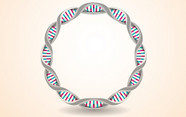Why Not Excel in Data Analysis?
There are a plethora of useful software packages available to analytical scientists for processing experimental data and results. At the top of the list – or pretty darn close to the top – is Microsoft Excel. Why?
Excel can do a variety of mathematical and statistical operations, such as one- and two-way analysis of variance (ANOVA), multiple linear regression, and even some matrix functions, thanks to a slew of readily available functions that cover a wide range of mathematical, statistical, and organizational operations that analytical scientists perform frequently (or infrequently). Excel allows users to design macros to perform user-defined operations. Over the past decade, software innovations have enabled expansion of its many existing capabilities and introduction of new capabilities, such as in some areas of chemometrics.
Importantly, Excel will interface with many well-known software packages for data analysis, and a number of software packages have been developed to specifically interface with it to expand Excel’s already wide range of data analysis functions and tools. In short, Excel possesses great versatility for analytical data treatment as well as the potential for further expansion of its many capabilities and is already one of the most widely used spreadsheet software packages on the planet.
I will be the first to admit that Excel cannot do everything; however, it does have a wide range of existing data analysis capabilities, and is highly versatile and adaptable to allow development of user-defined routines for data analysis. Undergraduate and graduate students in technical programs will encounter Excel at some point during their studies and in the workplace beyond.
For example, I require students in my undergraduate analytical chemistry and instrumental analysis lecture and laboratory courses to use Excel extensively. It’s great preparation for data analysis they might perform in the post-baccalaureate workplace. I have also introduced first-year students to Excel in their second-term general chemistry courses, and my undergraduate research students must use the software for the various types of data analysis they perform. Again, the focus is on the students’ job functions in their future workplace roles.
There are probably numerous reasons not to use Excel, but I have to say it serves the purposes of many of us analytical scientists well and is in my humble opinion, an excellent (no pun intended) tool for performing many types of analytical data treatment. So, I ask: why not Excel?
After taking undergraduate analytical chemistry in the mid-1970s, Mark Stauffer was convinced that analytical chemistry was the type of work he wanted to do as a chemist. “It was a combination of seeing how chemistry can be employed in a practical, useful, and helpful sense…plus, it uses lots of math, which I also enjoy.” Stauffer was firmly convinced of this after working in an industrial R & D analytical laboratory for a major chemicals manufacturer during the 1980s. “In mid-1991, I left industry to pursue an advanced degree in chemistry at the University of Pittsburgh, my undergrad alma mater. I consider this decision to be one of the best, if not the best, I’ve made so far.” By the time he completed his doctorate in 1998, Dr. Stauffer wanted to pursue an academic career in analytical chemistry, at a primarily undergraduate institution. Additionally, his already strong interests in data analysis led to a strong interest in chemometrics and the use of various software for analytical data treatment. Leap ahead to 2015 – “I’m an associate professor of chemistry at the University of Pittsburgh’s Greensburg, PA regional campus, teaching undergraduate analytical chemistry and instrumental analysis, mentoring undergraduates in research projects involving determination of metals and nonmetals in a variety of sample types, offering a short course on analytical data treatment at Pittcon, and offering in the current semester a course in chemometrics for chemistry majors at Pitt-Greensburg for the very first time. I’m doing exactly what I had hoped for all these years!”















